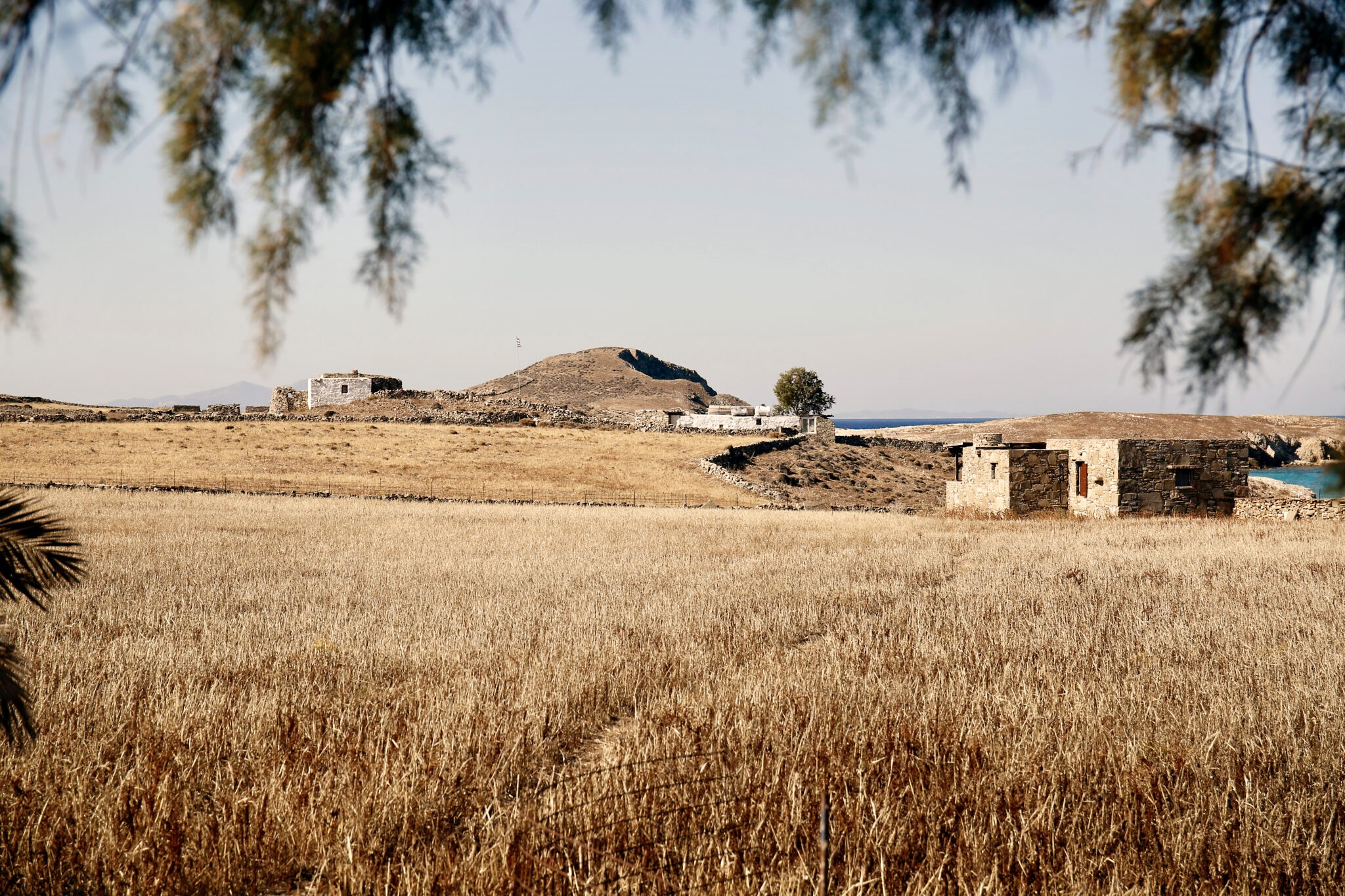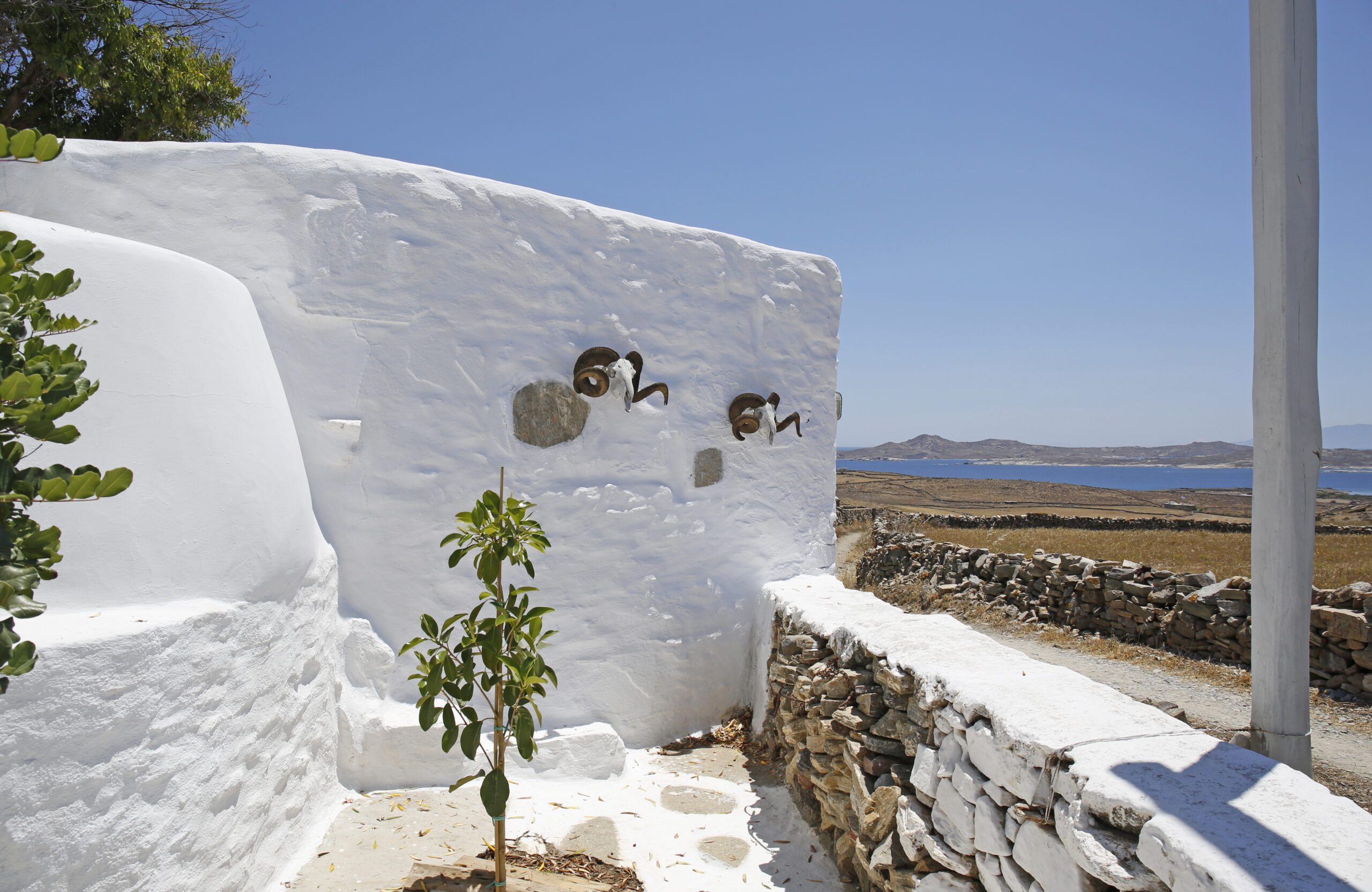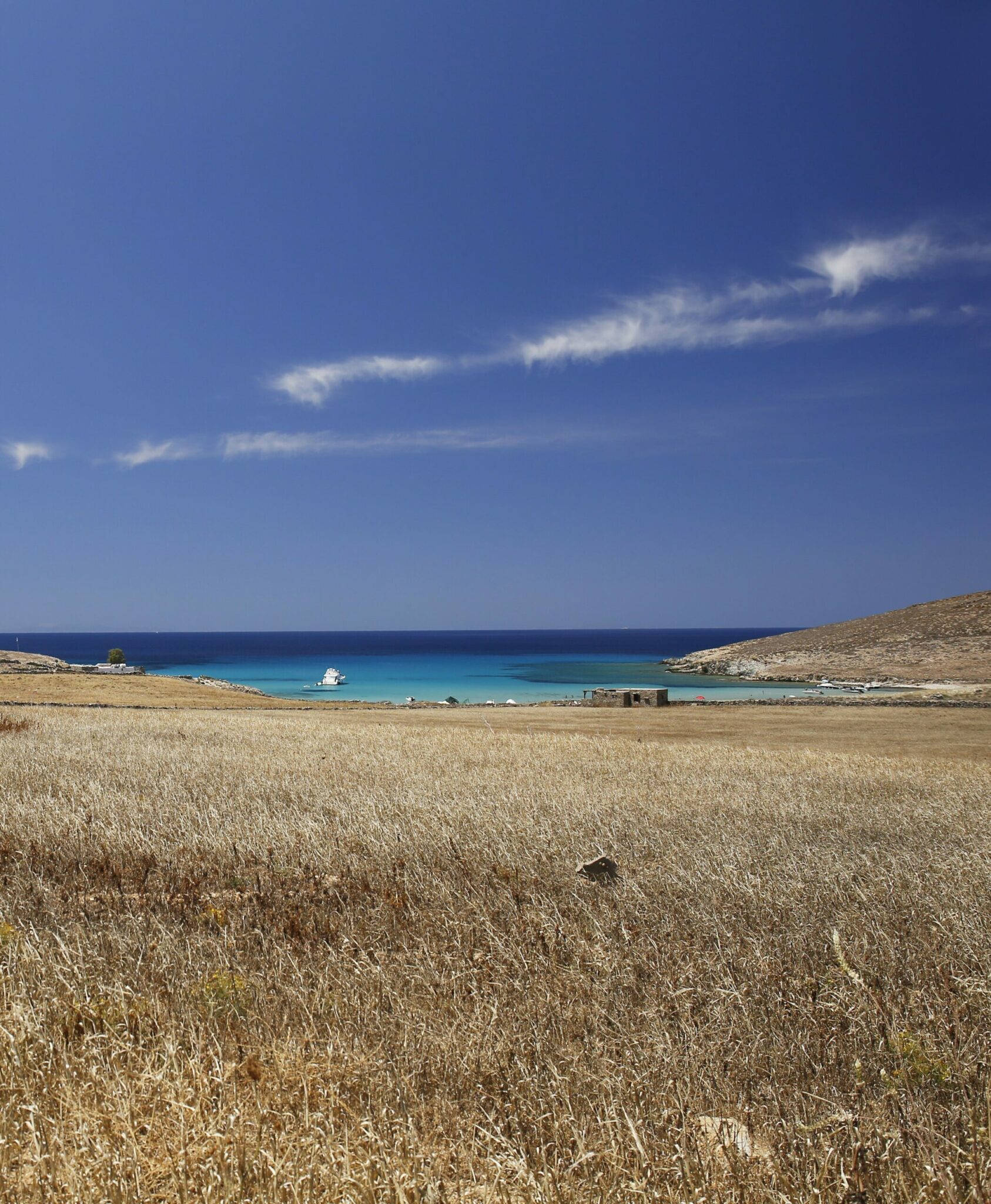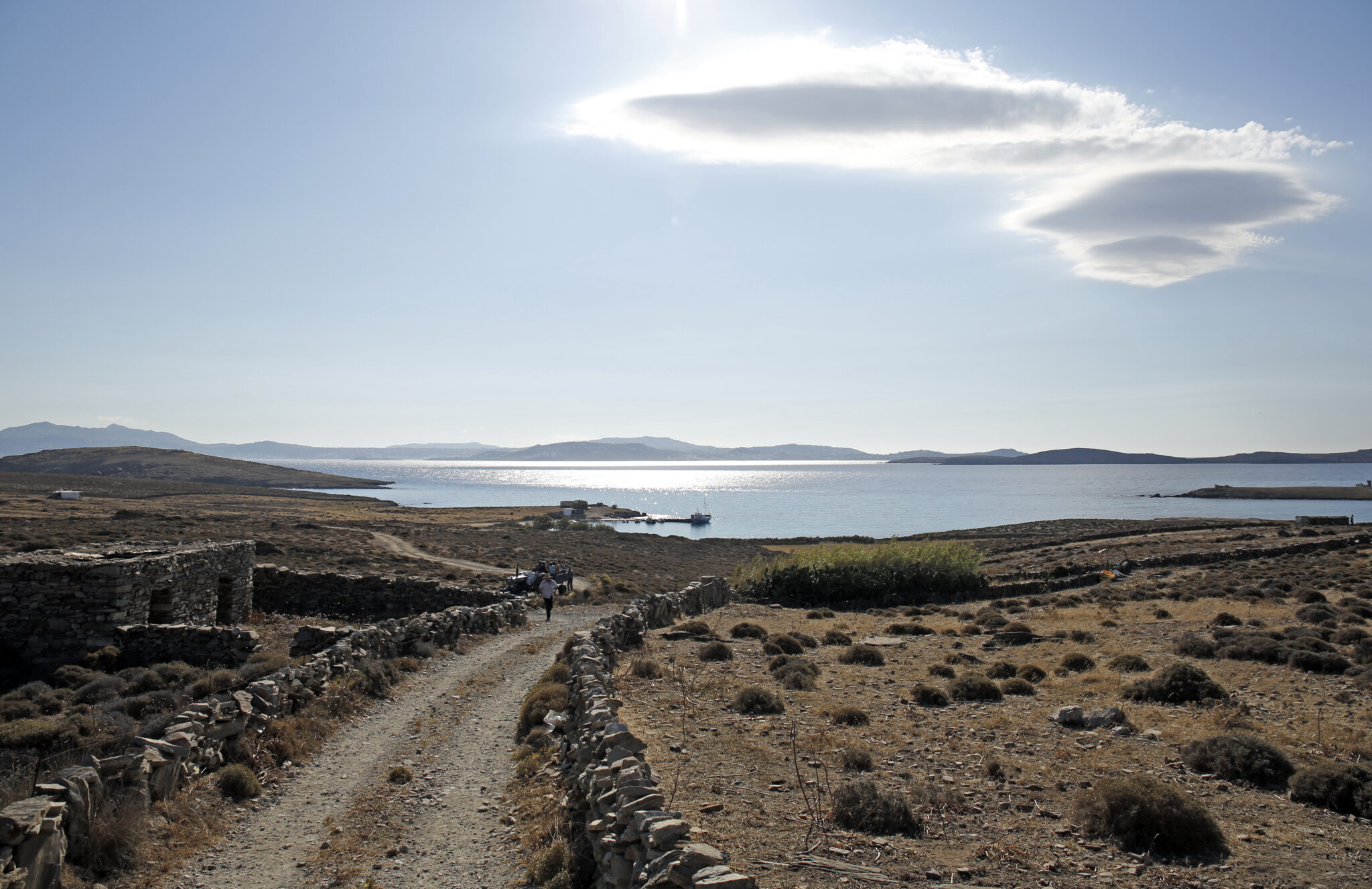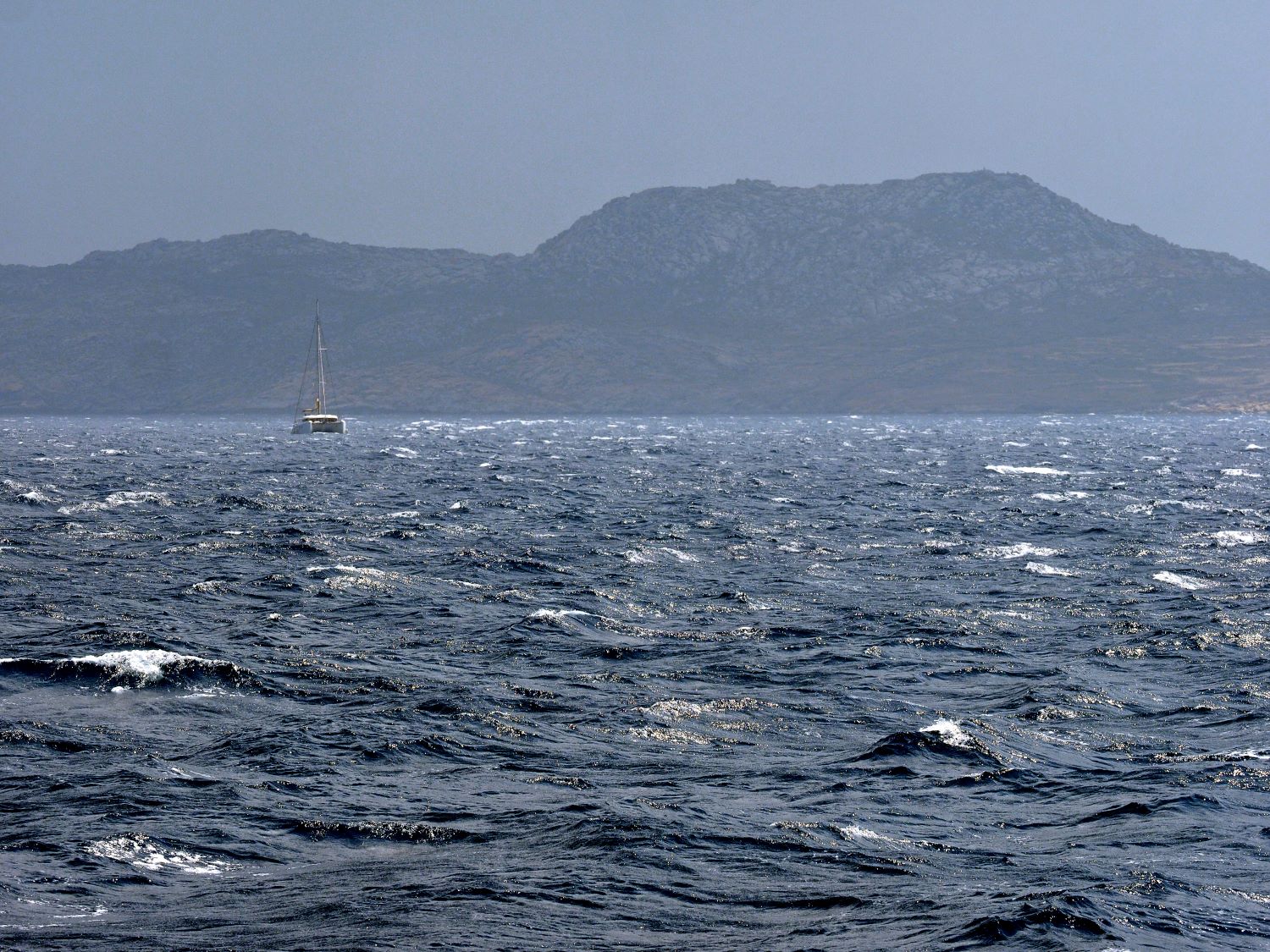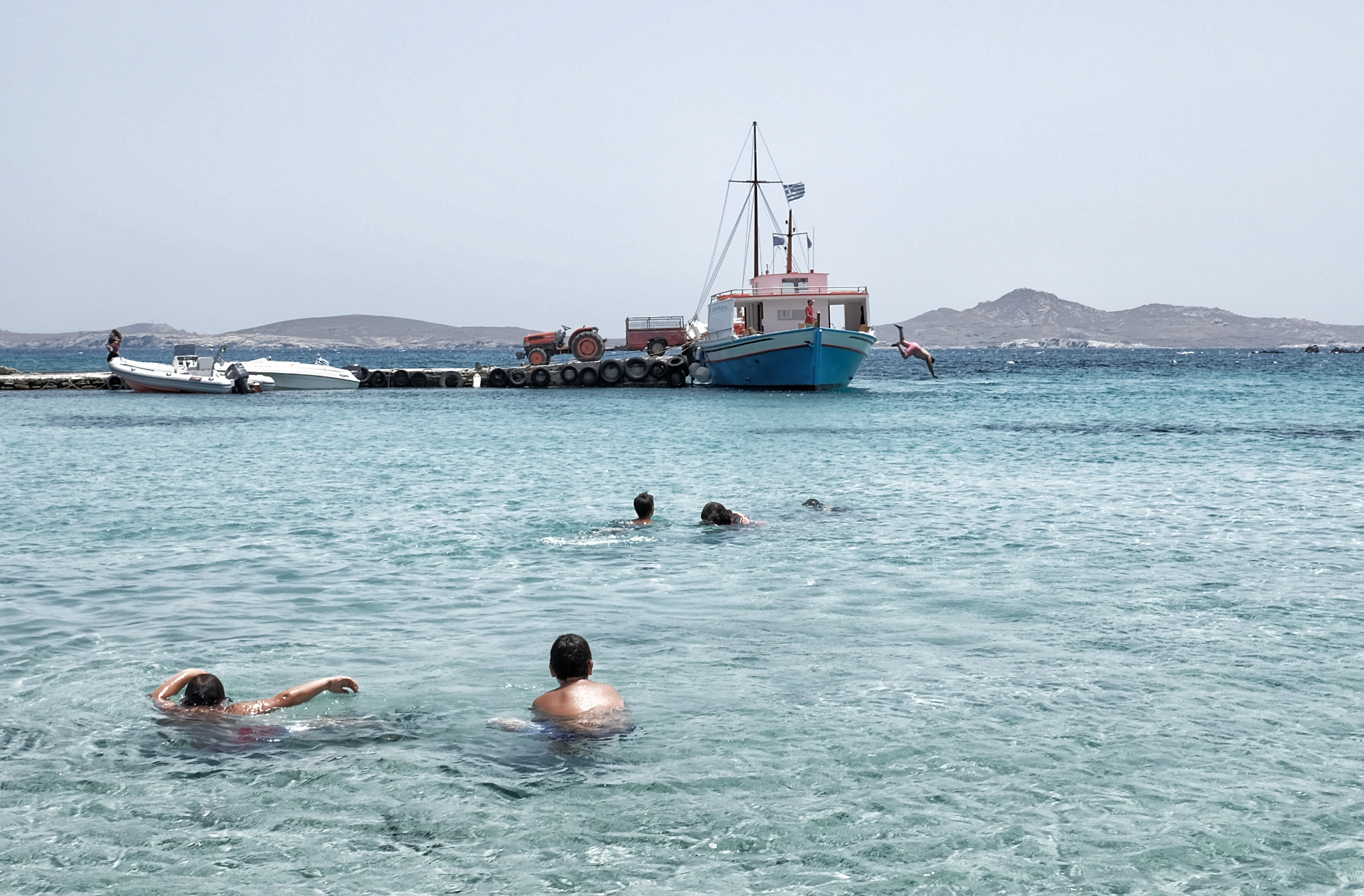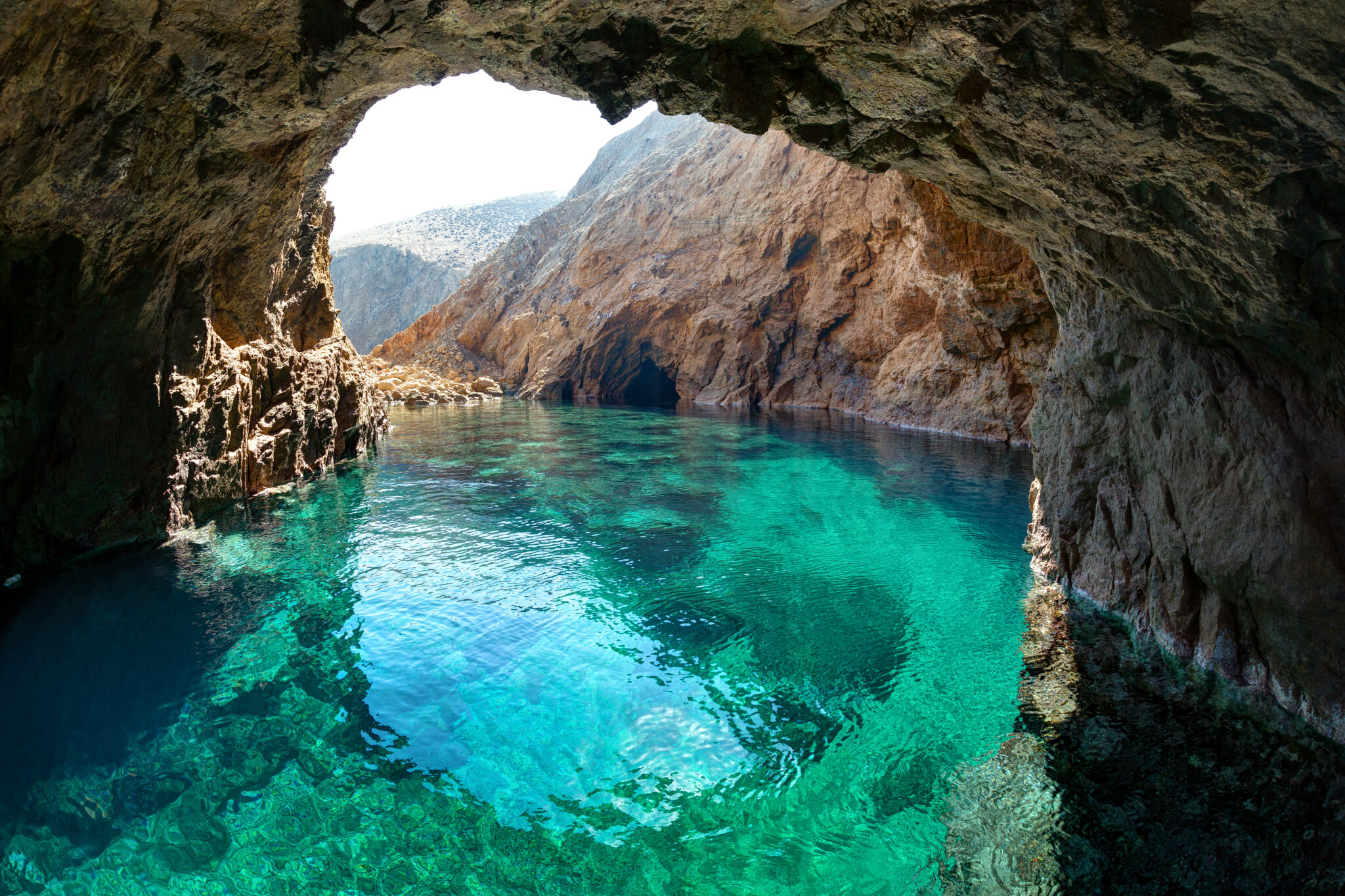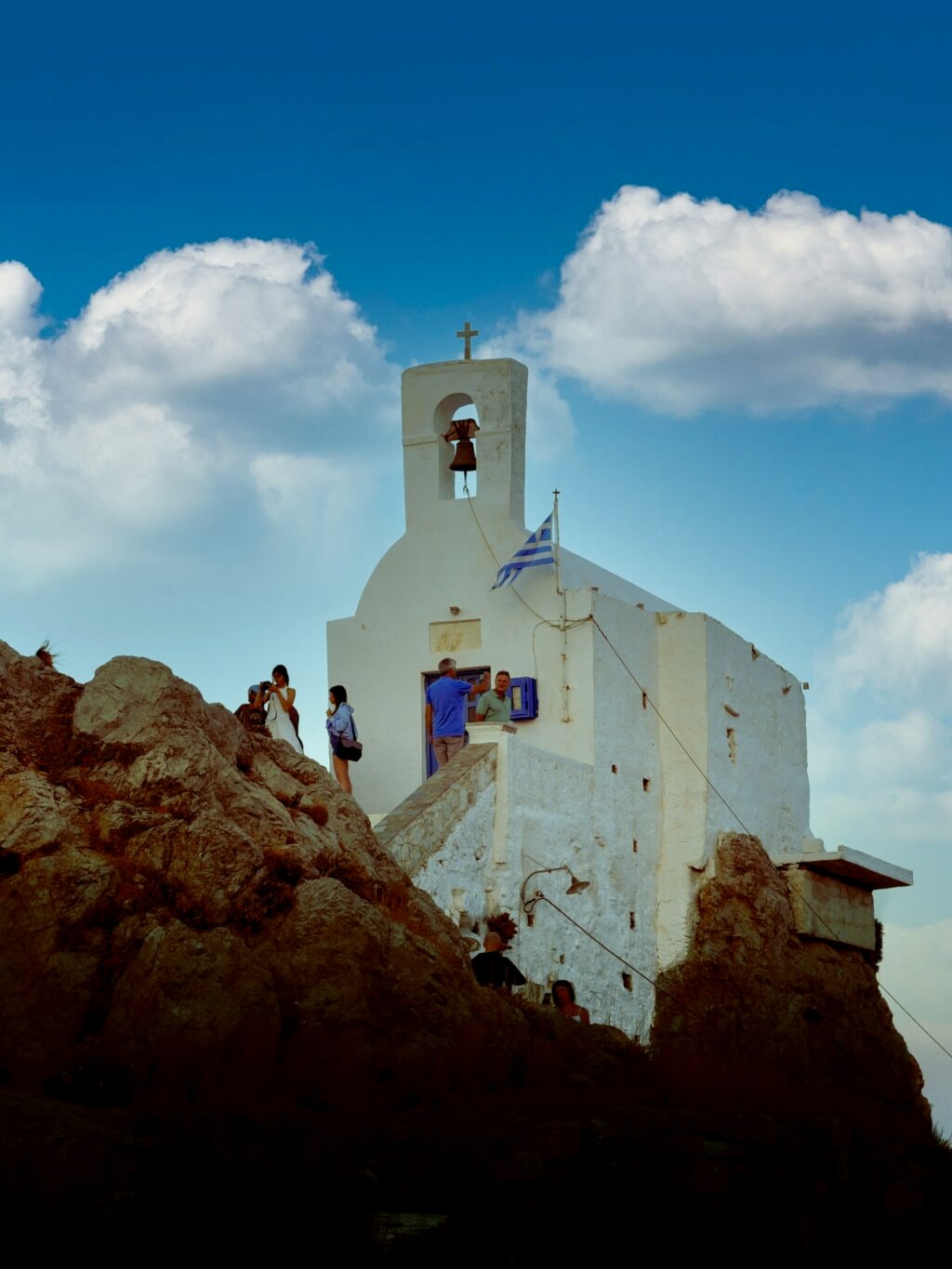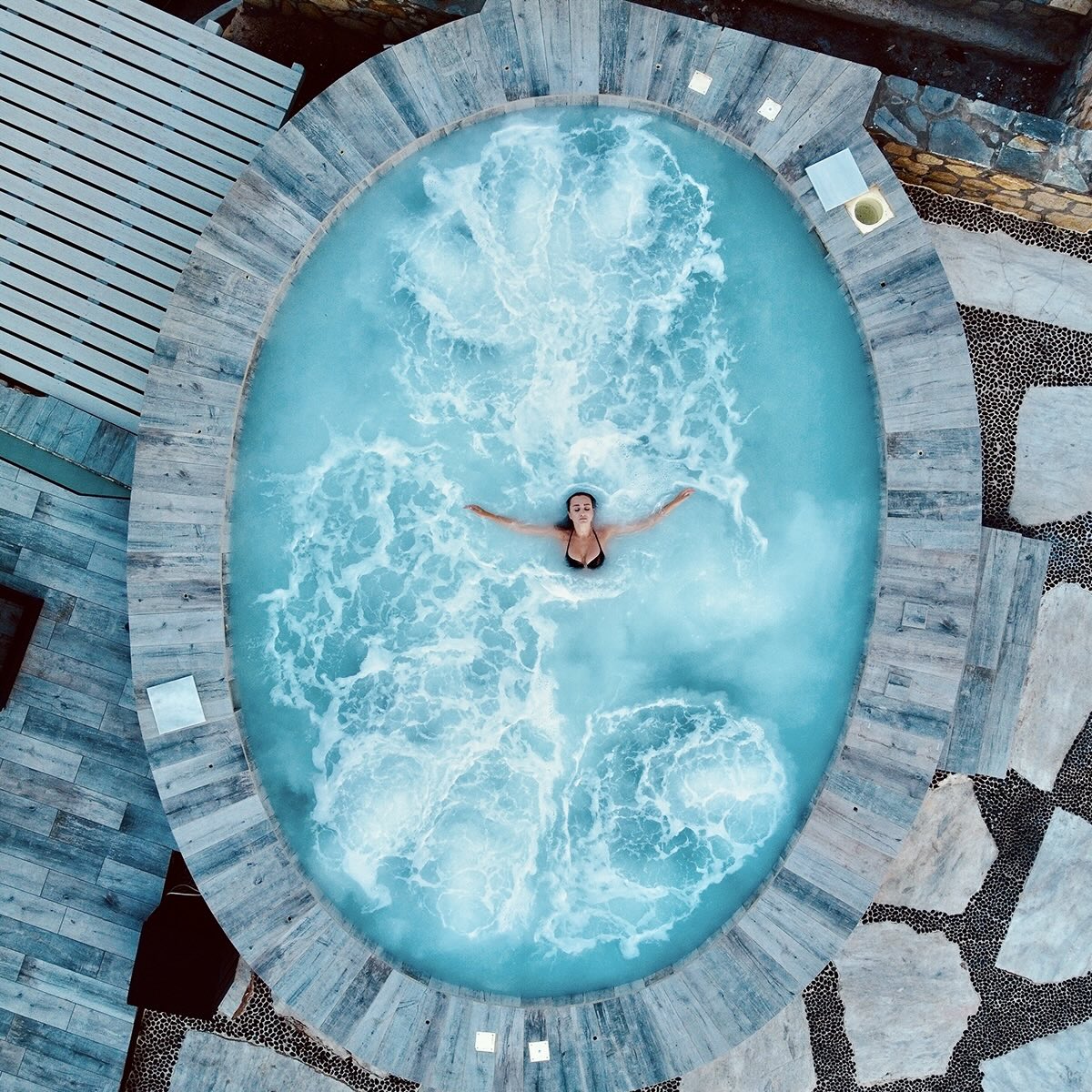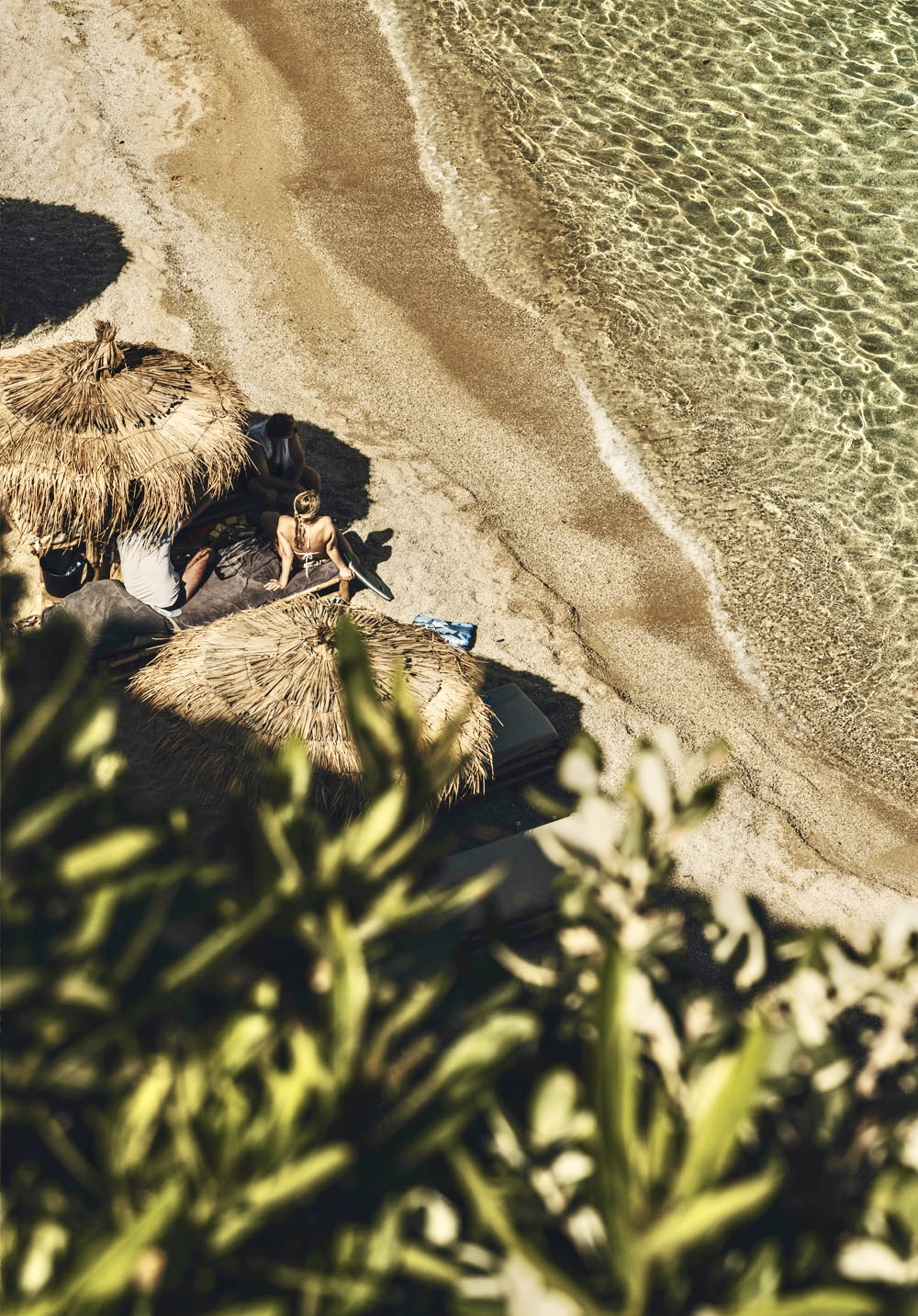Just a breath west of sacred Delos and a casual wake-splash from Mykonos lies Rineia, “Megali Delos” to the fishermen, Rínia if you’re on first-name terms. Most travelers never learn the name, let alone tug a line across the one-kilometer strait that guards its solitude. That is precisely why Rineia still feels like the Cyclades way before the beach clubs arrived.
Spread over 14 raw, sea-bleached square kilometers, the island is the centerpiece of a miniature archipelago. Two satellite crumbs, Mikros Rematiaris to the north and its big brother Megalos Rematiaris to the south, hover just offshore, while Tragonisi and Chtapodia keep watch from farther out. Together they form a Special Protection Zone under the EU’s Natura 2000 umbrella, a legal force field that bans resorts and preserves the hush.
The result is a landscape stripped to essentials: scrub that smells of thyme and sun, ruins of ancient farmhouses leaning into the meltemi, and five whitewashed chapels where the only congregation is wind and gull. There are no roads, no tavernas, no all-day playlists, only coves the color of blown glass and the thrill of discovering your own private beach between swims.
In the article that follows, we zigzag visually across Rineia’s forgotten footpaths. If Mykonos is the headline act, think of Rineia as the acoustic set, quieter, purer, unforgettable once you have heard it.
Photography by Nikos Kokkas.
01
Whispers from the Past:
Where History Meets Mystery
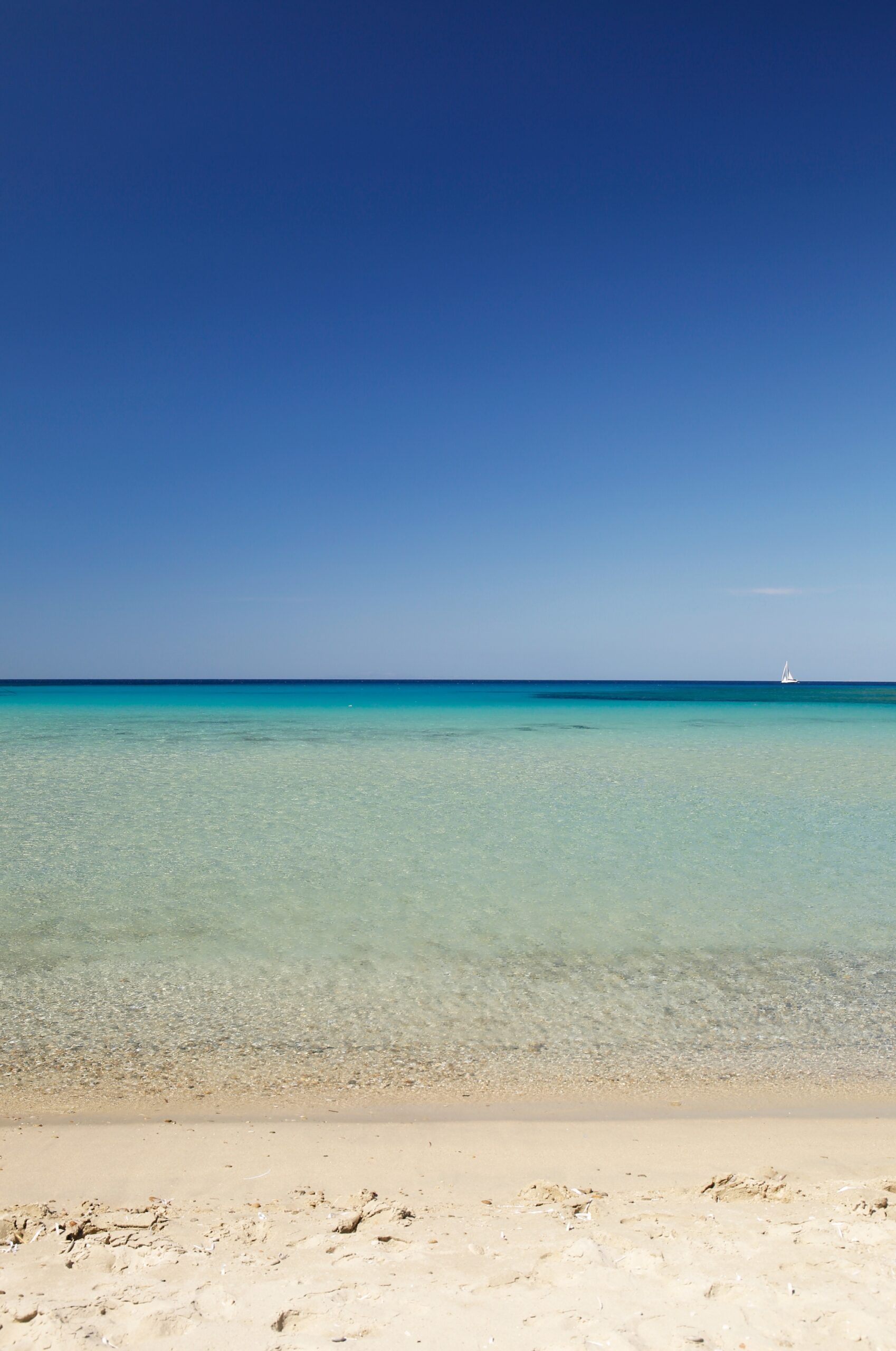
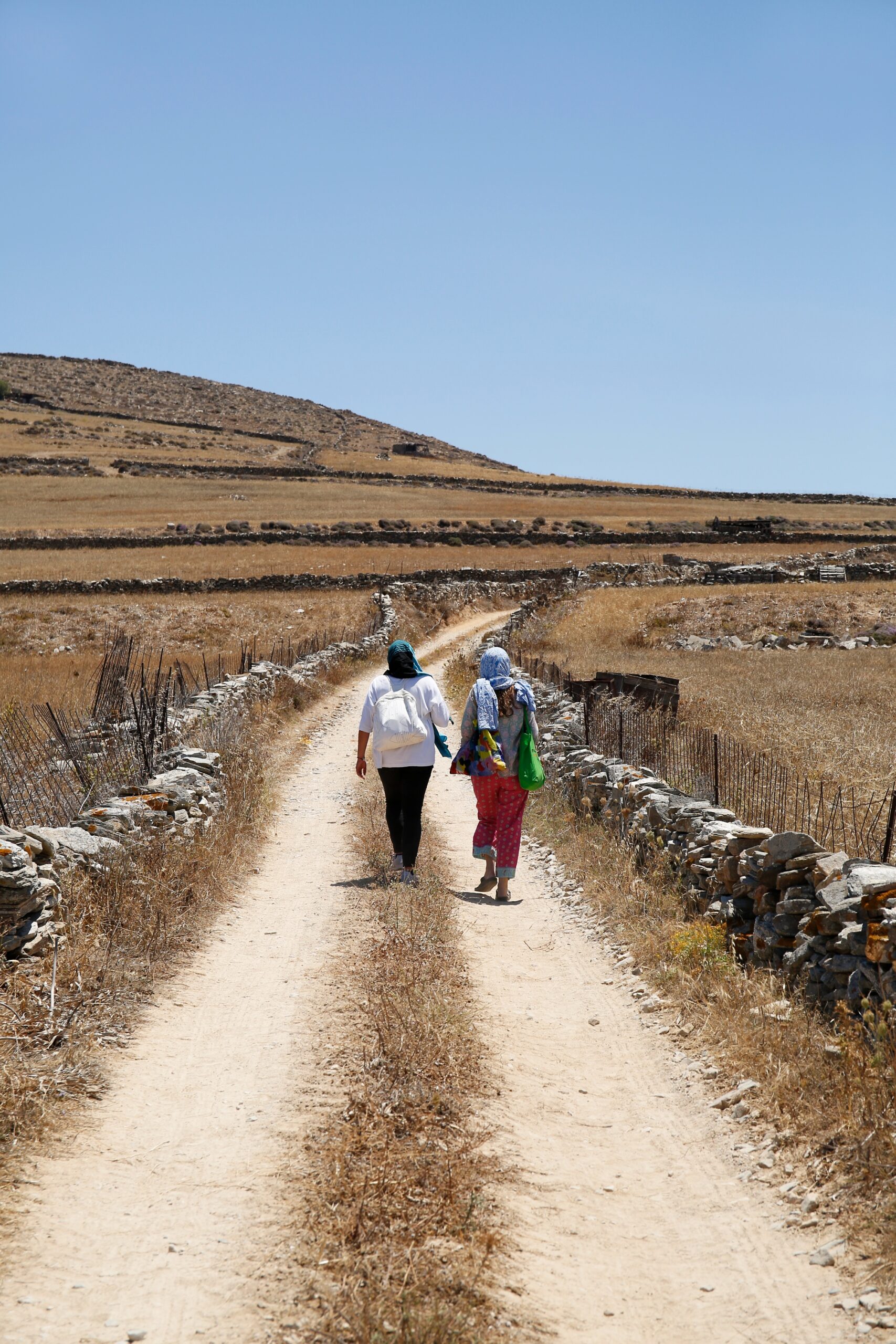
Here, toppled columns and chipped mosaic tiles still whisper of Hellenistic temples and early Christian basilicas, their fragments half-buried in thyme and sea fennel. Locals on Mykonos even fold Rineia and Delos into a single nickname, “the Diles,” a casual plural of Delos in Greek that speaks volumes about how inseparable the two islands’ myths, ruins, and destinies have always been.
02
Protected by Nature,
Blessed by Seclusion
Most of Rineia’s surviving farmhouses huddle around the whitewashed chapel of Agia Triada, just behind a sweep of sand that looks air-brushed. Threaded among them lie the tumbled foundations of an ancient polis and the weathered blocks of a sanctuary to Heracles (or Hercules), quiet proof that these fields have been worked for millennia.
The finest way to step into this layered past is to follow the dry-stone path that snakes inland from Kasari cove; within 20 unhurried minutes it delivers you to Agia Triada’s hushed settlement and its story-rich shore.
03
Secret Shores:
A Sailor’s Dream
Rineia reveals its sly charms from the water. Skippers who break away from Mykonos’s main routes and idle across the strait in just thirty minutes find themselves threading past sun-bleached headlands into untouched coves, remote bays, and strips of powder-fine sand. On the west side, Ampelia, Lygia, and Agia Triada wait with only gulls for company; swing south to wind-sheltered Skinos, or circle east to the inlets of Ntalotis, Karantines, Stena, and Kasari.
The island’s 43-kilometer shoreline delivers a pure hit of Cycladic wilderness at every turn, pristine, hushed, and almost always deserted. Bring extra water, a shade tarp, and a sense of discovery; facilities are nonexistent, which is exactly the point.
04
Echoes of Eternity:
Where Legends Sleep
Rineia’s story is deeply entwined with that of Delos. In 425 BCE, the Athenians “purified” Delos by moving all its graves to Rineia, which became the necropolis of the sacred island. The bones were buried in the “Pit of Purification,” unearthed by archaeologist Dimitrios Stavropoulos in 1898–1900. Later, Rineia became the place where pregnant women and the dying from Delos were brought to give birth or pass away.
The west of the island was once home to the city of the Rineians, with scattered farmhouses and important temples. The ancient burials span from the Mycenaean to the Classical eras, though most tombs were looted in antiquity. Roman cisterns have been found along the beach of Kato Gournali, and in the northwest (Ampelonas), archaeologists uncovered the ruins of an ancient city abandoned in the late 5th century BCE.
05
Wild Edges: Tragonisi
& the Chtapodia Rocks
Just a 1.6 kilometers off Mykonos’s eastern coast, the craggy islet of Tragonisi, sometimes written Dragonisi, draws a jagged silhouette against the Aegean. Wave-sculpted arches and honey-combed grottos rim its shore, including one vaulted passage so wide that a skipper can glide a dinghy straight through when the water lies flat. Inside the cobalt gloom you may glimpse the whiskered face of the Mediterranean monk seal, Monachus Monachus, dozing on a sun-splashed rock shelf, a reminder that wilderness still has a foothold in the Cyclades.
Five nautical miles to the southeast, the twin outcrops known as Htapodia – locals call it Stapodia – thrust out straight from the depths and are forever lashed by the wild meltemi winds. Landing here is a gamble, yet the reefs below reward the bold. Sheer walls plunge into an amphitheater of violet gorgonians and swaying seagrass, a realm patrolled by amberjacks and the occasional loggerhead turtle. For advanced divers, it is one of the archipelago’s last true frontiers.
Together, Tragonisi and Chtapodia prove that even in the orbit of globe-trotting Mykonos, corners still exist where salt, silence, and a thrilling sense of discovery reign. Pack curiosity, and the nerve to follow it.



